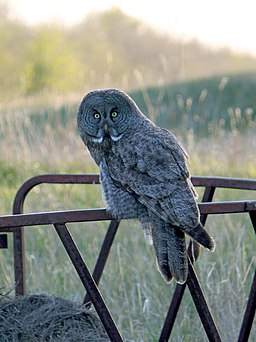Great Gray Owl
Strix nebulosa
Written by Chris Coyle
Nicknamed “The Phantom of the North,” this owl is the largest owl in length and is found in both the eastern and western hemispheres. They are seen occasionally in New England, especially during winters when food is scarce in their usual range.
HABITAT:
These owls frequently inhabit deep coniferous or boreal forests but also found in open country. Great Grey Owls require places to perch for their hunting.
NESTING:
Great Grey Owls do not build their own nests, instead relying on nests previously used by other large birds, such as raptors. Four eggs is the usual clutch size. The abundance of food has a direct effect on clutch size. After the owlets start to fly, the male takes over feeding duties until the young are able to hunt on their own.
BEHAVIOR:
Great Grey Owls have excellent hearing and frequently hunt from a low listening post such as a stump or a low tree limb. Once they see or hear prey, they swoop down and are known to penetrate snow to a depth equal to their body size to capture prey. They feed in bogs, meadows and
frozen area.
FOOD:
The usual food is small rodents; however, they may prey upon small birds if their preferred food is not available.
PREDATORS:
Great Grey Owls have few predators but dangers from ingesting prey with rodenticides and collision with vehicles may claim them.

